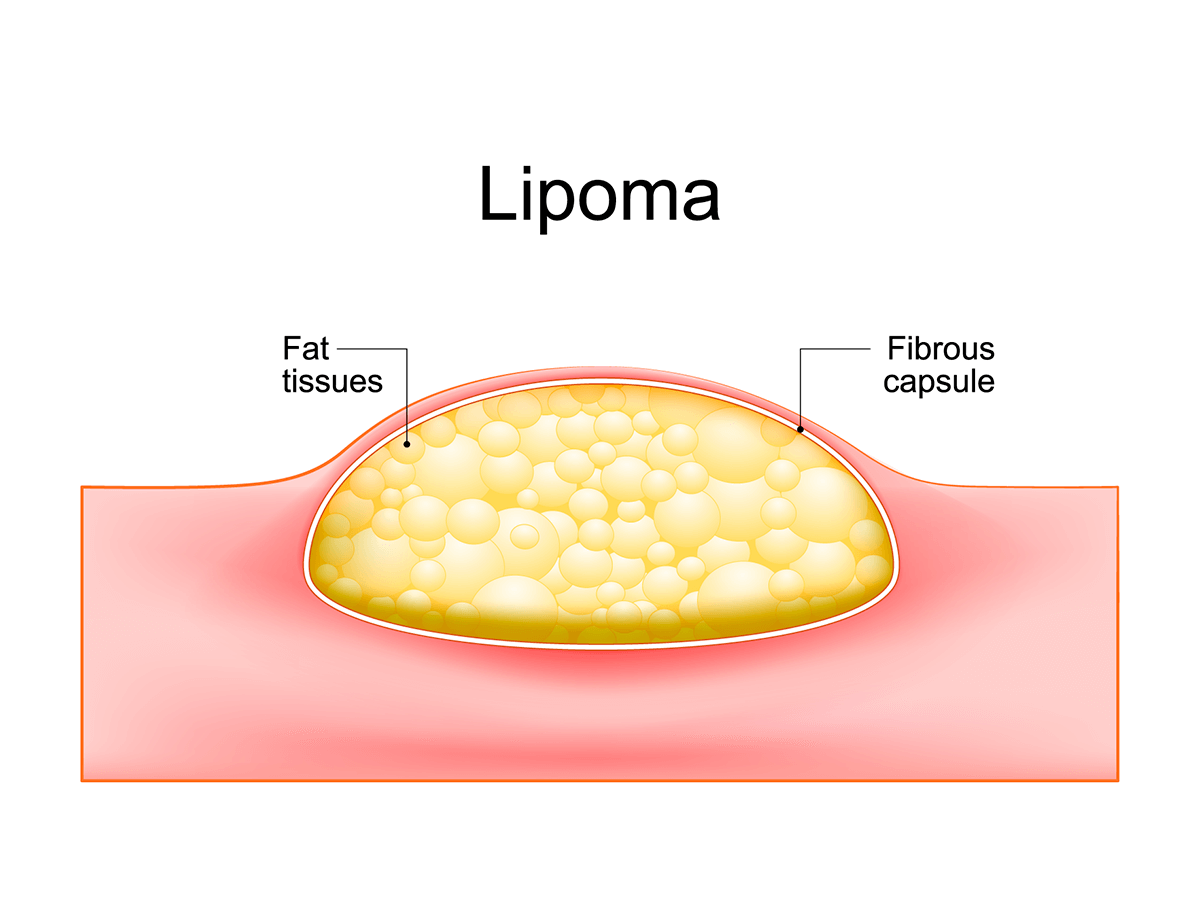- +52 664 761 5349
- contact@tijuanasurgery.com
- Paseo de los Héroes 9211 Edificio Xtal Zona Rio Tijuana BC México 22010

A lipoma is a mass of fat cells in a thin, fibrous capsule that is usually found just under the skin. Lipomas are not cancerous and do not turn into cancer. They are most often found on the torso, neck, upper thighs, upper arms, and armpits, but can occur almost anywhere on the body. There may be one or more lipomas at the same time.
It is very important to clarify that not all lumps under the skin are lipomas, so it is very important that your general surgeon makes an evaluation to rule out other benign and malignant pathologies.
The exact cause of a lipoma is unknown, however, there are factors that can increase the risk of developing a lipoma. The factors that usually lead to the appearance of one or more lipomas are, mainly:

Lipomas can form anywhere on the body. They usually have the following characteristics:

Found just under the skin
They usually occur on the neck, shoulders, back, abdomen, arms and thighs.

They are soft and doughy to the touch
They also move easily when light finger pressure is applied.

They are usually small
Lipomas are usually less than 2 inches (5 centimeters) in diameter, but they can grow.

Sometimes painful
Lipomas can be painful if they grow and put pressure on nearby nerves or if they have many blood vessels.
Surgical excision: This is the most commonly used technique to treat a lipoma, since it is the only technique that ensures the complete removal of the lipoma. The doctor makes a small incision in the skin after having previously anesthetized the surgical area locally. It is a simple operation and of short duration, between 20 and 30 minutes, depending on each case and the amount of lipomas to be removed.
In most cases you can return to your normal life and does not require incapacity for work and requires minimal care after surgery.
Dr. Javier Cisneros Lopez is a general surgeon specializing in anorectal pathology surgery in the city of Tijuana, Baja California Mexico with 26 years of experience and more than 7,000 procedures performed. If you have any symptom or have doubts about your health
Lipomas are the most common soft tissue tumors in the body. They can be located in any part of the body, being more infrequent their location in extremities and back. They are usually non-painful tumors that do not produce clinical symptoms, but sometimes they can produce clinical symptoms due to nerve compression and cause pain, numbness, cramps and electric shocks.
The best test to determine if a cyst or tumor is benign or malignant is the evaluation by a general surgeon who is a specialist in this type of surgery. The surgeon will make a clinical evaluation and if necessary request imaging studies to confirm the diagnosis. Once the diagnosis has been evaluated and confirmed, a biopsy or removal of the lesion must be performed. This procedure consists of extracting a sample of the affected tissue or, in some cases, of the entire suspicious area, and sending it for evaluation by the clinical pathologist to be studied under a microscope and give the definitive diagnosis.
When the cyst or lipoma is infected, it can cause pain in the area, fever, redness of the area. It is important that in these cases the patient goes to a medical consultation with the general surgeon, so that they can assess the status of the lesion and give medical and/or surgical treatment.
Yes, 90% of them can be performed without complications in the general surgeon’s office depending on the size and location, with local anesthesia without discomfort for the patient.
The patient can lead a normal life, avoiding exertion during the first 2-3 days so that the wound heals properly. Generally, after a week the patient will be completely recovered.
Contact information
Copyrights ©2022 – Tijuana Surgery Center